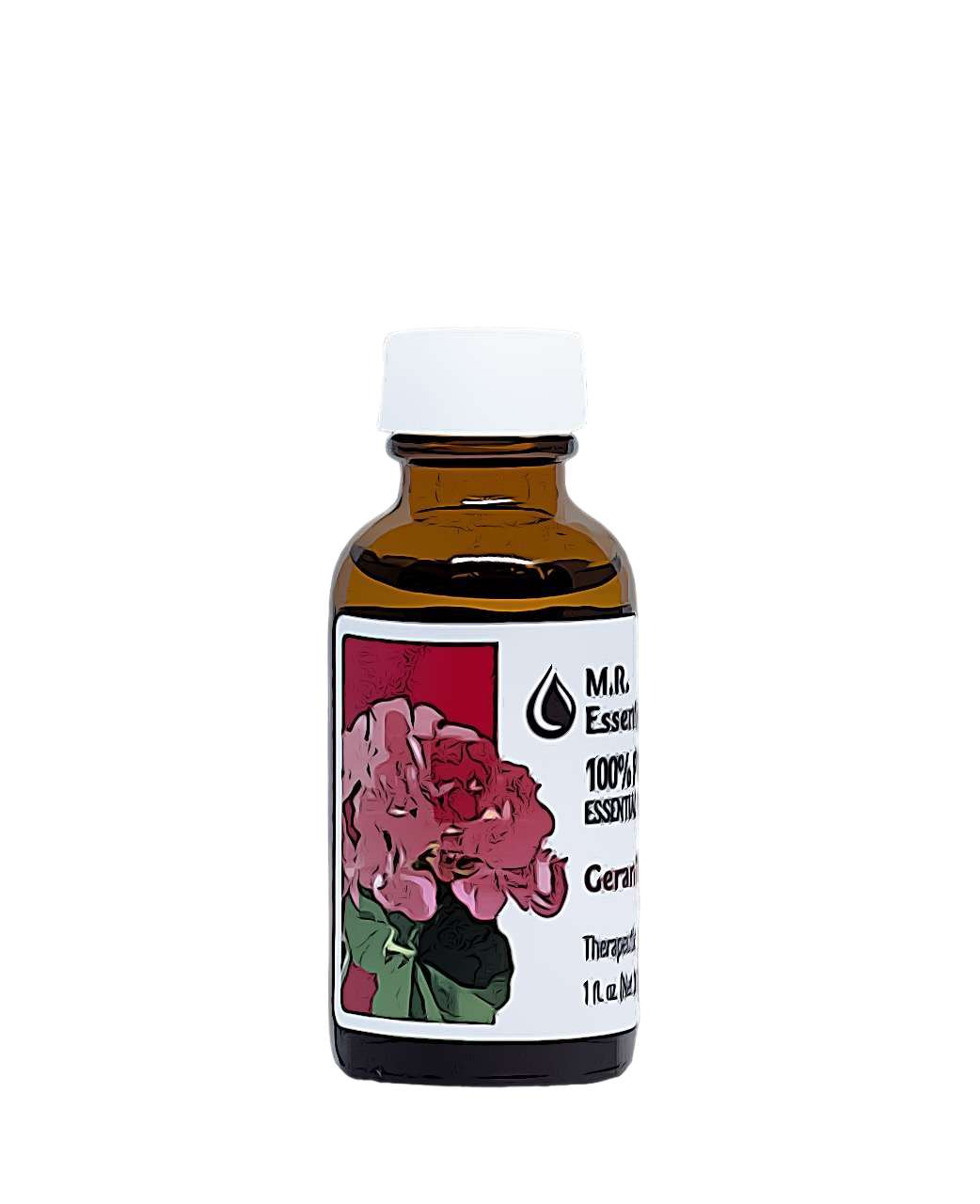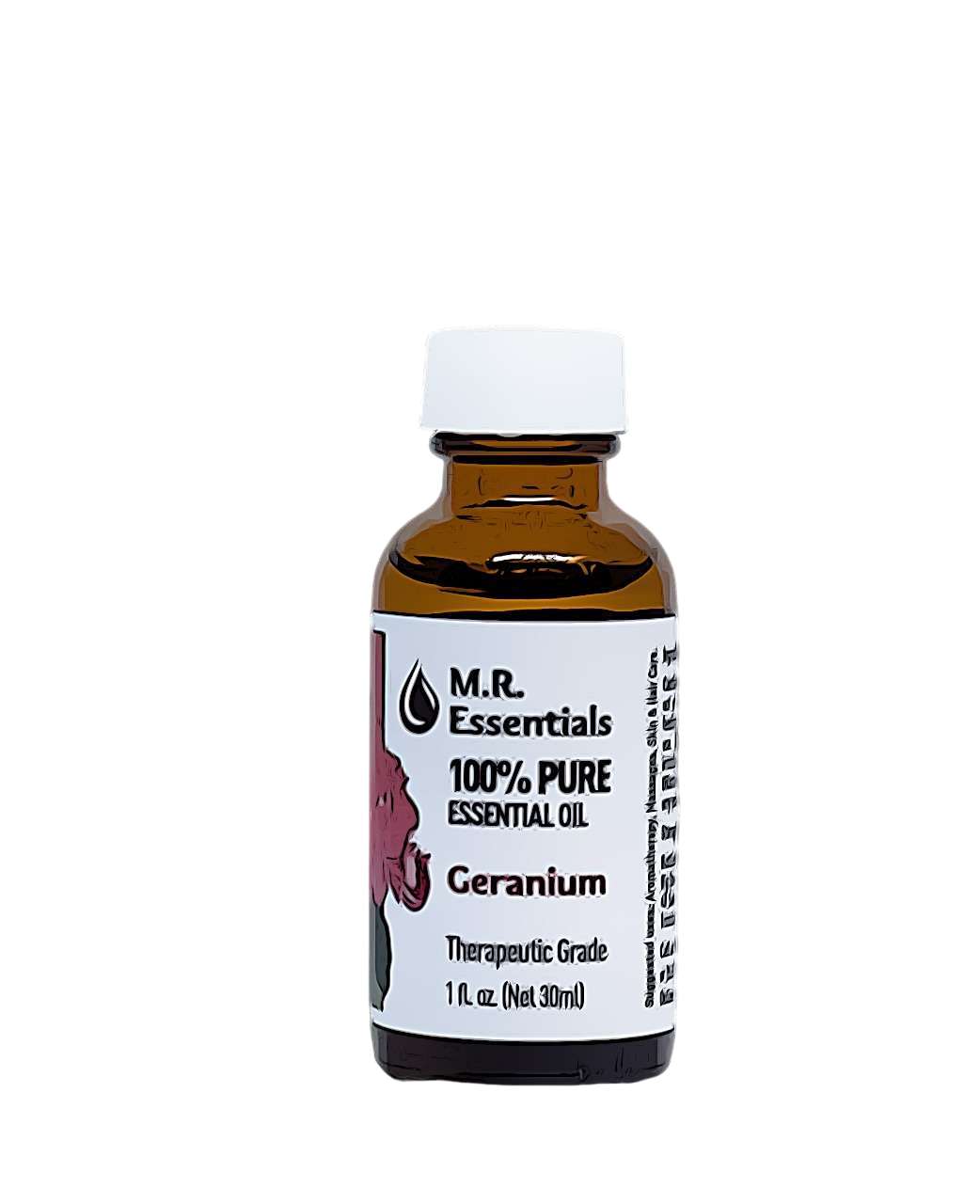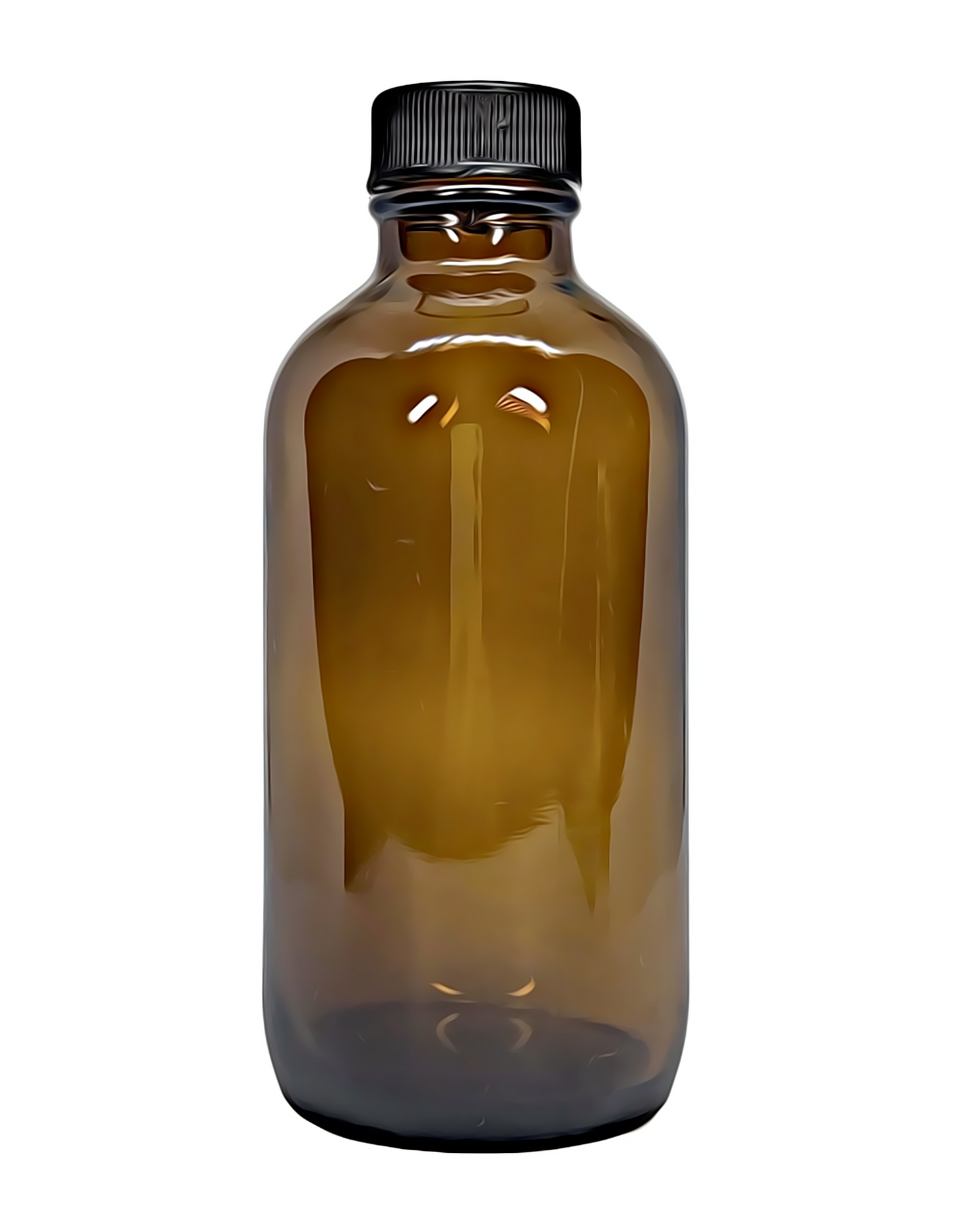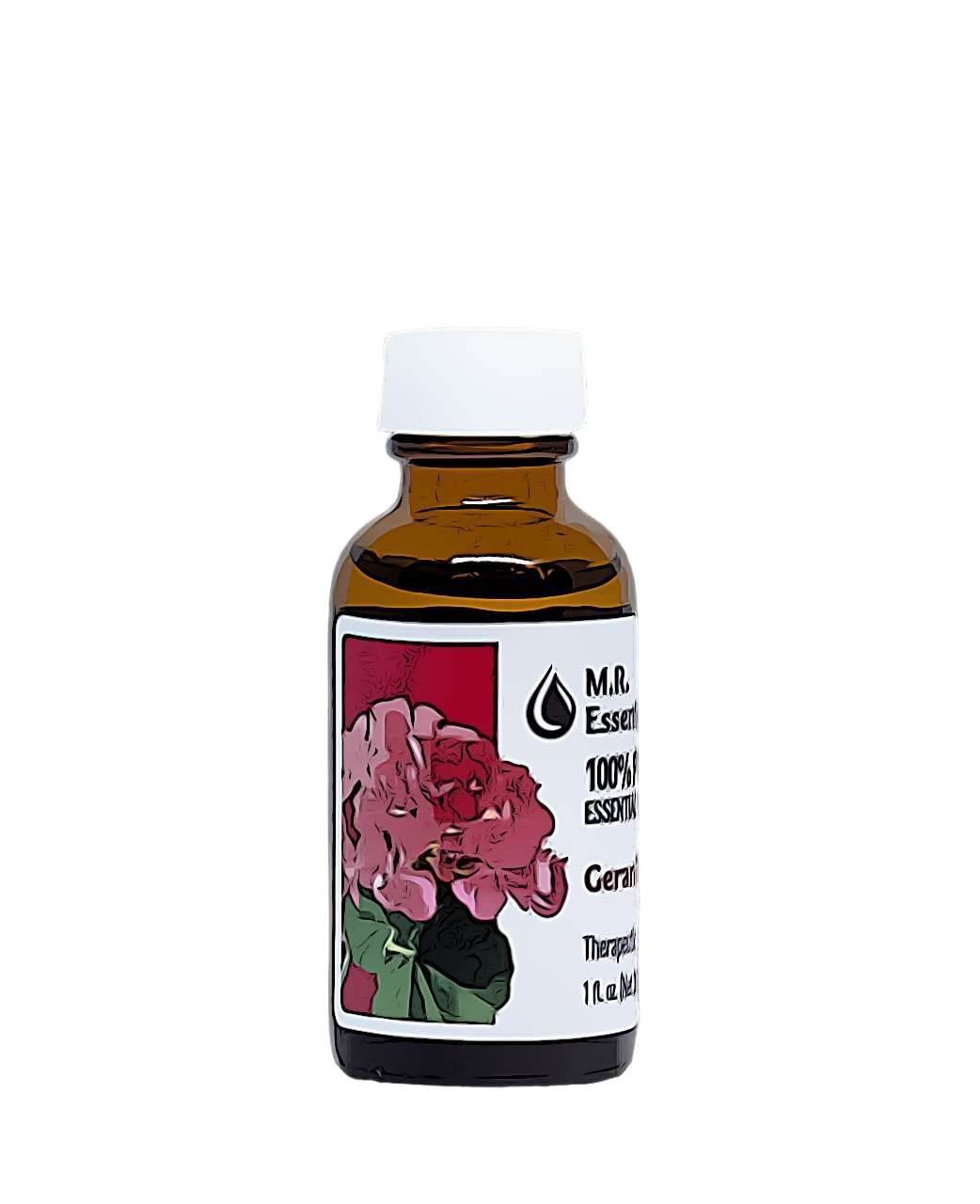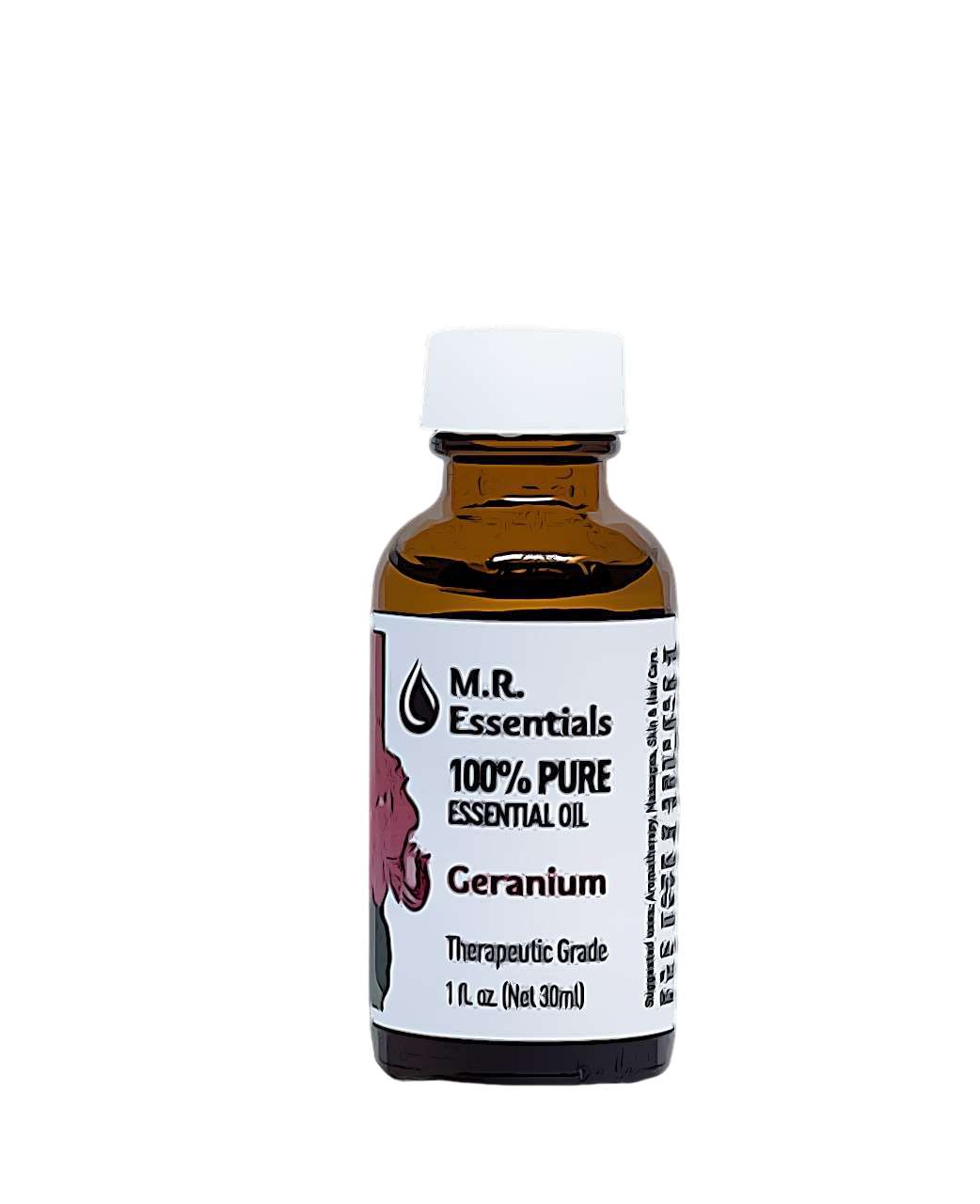MR Essentials
Geranium Essential Oil (Pelargonium graveolens)
Geranium Essential Oil (Pelargonium graveolens)
Couldn't load pickup availability
*The statements below have not been evaluated by the Food and Drug Administration. This product is not intended to diagnose, treat, cure, or prevent any disease.
Share
Product Details
Product Details
Method of Extraction: Steam Distillation.
Plant Part Used: Leaves.
Color: Clear to Pale Yellow/Green.
Consistency: Thin.
Aromatic Description
Aromatic Description
Perfumery Note: Middle.
Strength of Initial Aroma: Very Strong
Aromatic Description: Floral, fresh, sweet and slightly fruity.
Suggested Uses
Suggested Uses
• Female Reproductive Disorders.
• Menstrual Cramps.
• Infertility.
• Endometriosis.
• Premenstrual Syndrome.
• Menopausal Symptoms.
• Circulatory Disorders.
• Reynaud'S Disease.
• Varicose Veins.
• Hemorrhoids.
• Neuralgia.
• Nervous Skin Disorders.
• Depression.
• Fatigue.
• Emotional Crisis.
• Stress-related Conditions.
• Wounds.
• Acne.
• Bruises.
• Minor Burns.
• Dermatitis.
• Eczema.
• Ulcers.
• Hemorrhoids.
• Head Lice.
• Ringworm.
• Sebum Balancing.
• Urinary + Liver Tonic.
Sources: Valerie Ann Worwood, The Complete Book of Essential Oils and Aromatherapy, 25th Anniversary Edition (Novato, CA: New World Library, 2016, 591. Neryls Purchon and Lora Cantele, Complete Aromatherapy & Essential Oils Handbook for Everyday Wellness (Toronto ON: Robert Rose, 2014), 61.
Dilution Guideline
Dilution Guideline
Adults: Usually, a 2-3% dilution is suitable, about 12-18 drops of essential oil per ounce of carrier oil.
Children (5-10), Frail Elderly, Sensitive Skin: A lower dilution of 1% or less (6 drops per ounce).
Facial or Sensitive Areas: Use a 0.5-1% dilution (3-6 drops per ounce).
Acute or Short-Term Use: For resolving a specific issue, a marginally higher dilution can be used for a period of 2-3 weeks as necessary.
Major Constituents
Major Constituents
Citronellol. Geraniol. Linalol. Citronellyl formate. Isomenthone. 10-epi-Gamma-Eudesmol. Geranyl Formate.
Source: B. Benveniste and N. Azzo, Geranium Oil. (Mount Vernon, NY: Technical Bulletin & Newsletter, Vol. II, Kato Worldwide Ltd., July 1, 1992). Source cited in Robert Tisserand and Rodney Young, Essential Oil Safety (Second Edition. United Kingdom: Churchill Livingstone Elsevier, 2014), 293.]
Safety Information
Safety Information
Tisserand and Young caution that a drug interaction may occur if using drugs metabolized by CYP2B6. They indicate that the Geranium Oil possesses a low risk of skin sensitization and recommend a dermal maximum of 17.5%.
Reading Tisserand and Young's full profile is recommended. [Robert Tisserand and Rodney Young, Essential Oil Safety (Second Edition. United Kingdom: Churchill Livingstone Elsevier, 2014), 293.]
